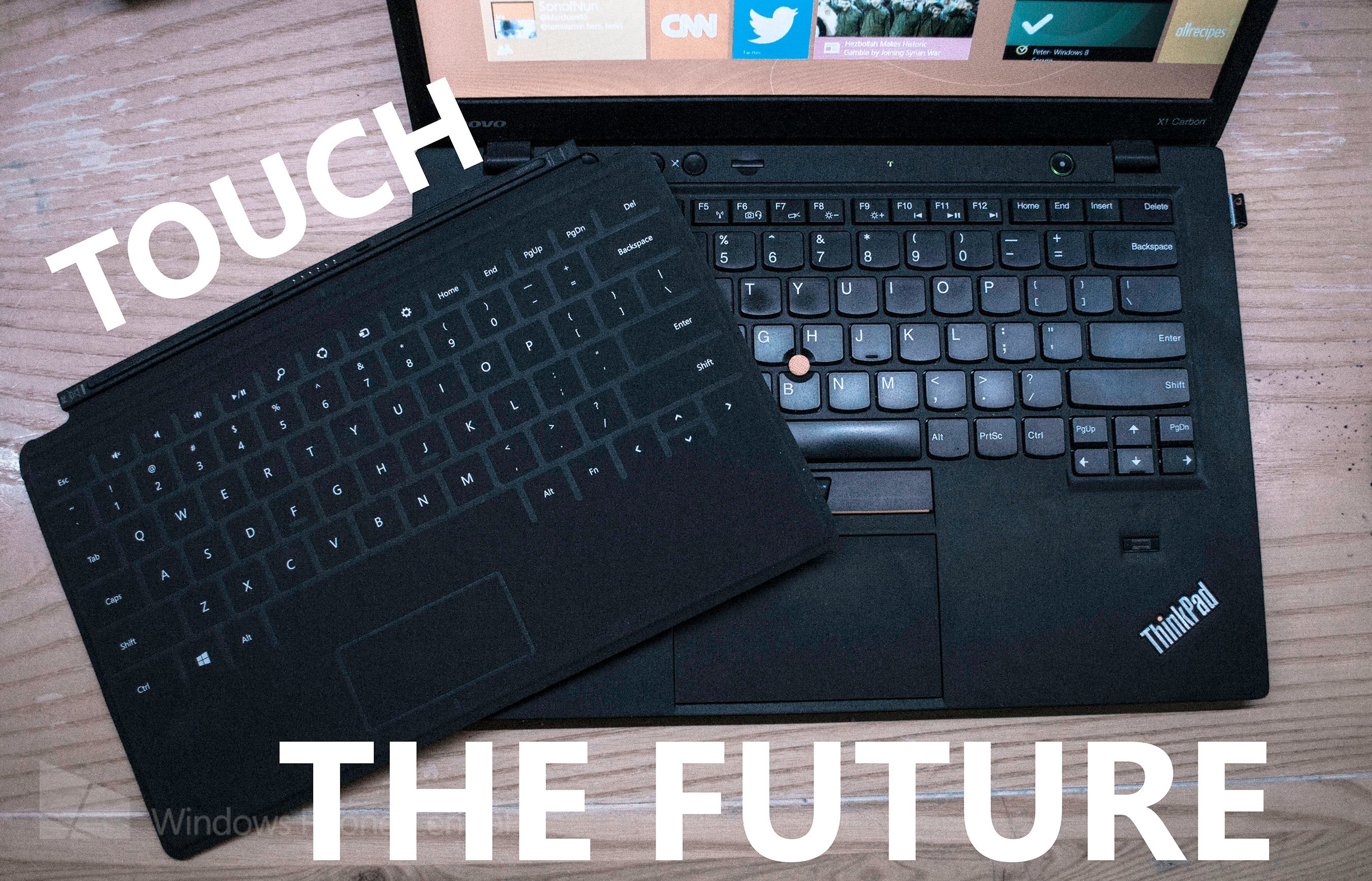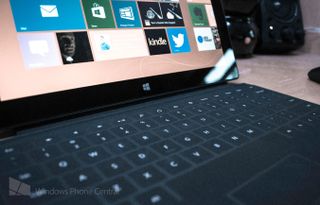Keyboards: Touch the future

The keyboard has long been our best friend, but in an age of tablets and natural user interfaces, such as the touch screen – how long will they last as we have known them?
The famous input device was first conceptualized during the late 19th century. When a need to send financial stock data over telephone lines arouse, the early keyboard prototypes were improved upon and the teletype was invented. Teletype machines were able to send lines of text from a transmitting station to a stock ticker machine where the data was then printed out onto ticker tape.
As we move forward into the 20th century, typewriters became more common and the keyboard layout that rules the western world, QWERTY, was born. Back then, hitting the common keys too fast in succession actually jammed the entire machine! The QWERTY keyboard layout merged in order to combat this problem and prevent mechanical malfunctions by distributing keys according to their use frequency. Of course other keyboard exist as well (including QWERTZ and DVORAK), but QWERTY remains the most popular. If you ever wondered how the keyboard layouts got their names, simply look at the first six letter keys on your keyboard right now.
Today, many of us type away on our Ultrabooks and their “dome switch” keyboards. Pushing down a laptop key forces a dome shaped membrane to complete an underlying circuit and thus signal the computer that a key has been pressed. Many typists (read, “geeks”) enjoy using mechanical-switch or buckling-spring keyboards that produce an audible click when depressed; this confirmation of a key press is considered beneficial. Although the buckling-spring keyboard was abandoned by direct IBM manufacturing in 1993, a retro through-back can still be enjoyed thanks to Unicomp (the current manufacturer); its mechanical-switch keyboard brother can also still be found breathing and if you want to pick one up, I recommend the Razer Blackwidow.

As technology moved forward into the Pocket-PC and PDA era, multiple alternative forms of data entry were brought to light. Palm introduced Graffiti, a method of entering text by scribbling character symbols onto a resistive touch pad. Not all devices had to re-invent the keyboard though, Palm simply miniaturized it for their Treo devices – this, is where Apple thought it was time to revolutionize the way we input data into our mobile companions.
In 2007, Apple introduced their first generation iPhone; not necessarily the first device with a touchscreen keyboard, but the first one to perfect it. This moment was a pivoting point for technology and most smartphones as we know them today, rely solely on a touchscreen interface. The virtual keyboard exploded in popularity, and physical keyboards got their first taste of the future.
Now, tablets are popular and one of the best ways to get work done on the go. If you head to your favorite computer retailer or visit your local Microsoft Store, Ultrabooks that turn into tablet and tablets that turn into Ultrabooks are scattered as far as the eye can see. There are tablets with snap on keyboards, tablets with touch keyboards, and tablets with only virtual keyboards. As we move forward into a touch based world where natural user interaction is at the helm, our old keyboard friends could have a hard time fitting in.
Get the Windows Central Newsletter
All the latest news, reviews, and guides for Windows and Xbox diehards.
Carrying a Samsung Windows tablet might be nice, but who wants to have to remember bringing along their keyboard? In retrospect, carrying a Lenovo YOGA around might be nice, but who wants to always have the bulk of a keyboard strapped onto the back? In my opinion, Microsoft hit the ball furthest with their Touch and Type Covers, but we still aren’t there yet. The Touch Cover can be difficult to type on for some and the slightly more physical, Type Cover, can feel cramped to others.

So, where does this leave us? Will physical keyboards that depress always be present – strapped onto the back of our Ultrabooks or carried around in our bags like an accessory? Or, will we have to adapt and learn to use our new Touch Cover and virtual keyboard friends?
This entire article was typed on my Microsoft Surface RT’s Touch Cover and I have to say that after having the unit for a week and practicing everyday – I just might be able to abandon my laptop’s keyboard. I also love how easy it is to clean the keyboard with a damp sponge and towel. There is something magical about the Surface Touch Cover; it's there when I need it, but hidden and out of sight (without adding much weight or thickness) when I don’t need it. The keyboard does have some negatives though, such as the fact that I can’t type on the couch or in my bed very well, but then again – chance of physical injury from typing is reduced significantly.
What do you think about the future of typing – will the keyboard as we know it live on or is the future full of Touch Covers and virtual keyboards?
